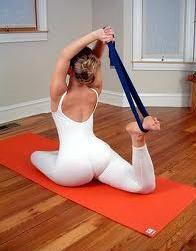Muscle Soreness
 What causes muscle soreness following exercise?
What causes muscle soreness following exercise?
Muscle soreness is caused when the body is working to adapt to exertion—it’s how you get stronger! Most exercise physiologists believe it is due to microscopic tearing and swelling of the muscle fibers. More tearing = more soreness. This typically occurs after starting a new exercise program or when increasing frequency, duration, or intensity of exercise. Also, eccentric exercises (going down stairs, downward motion of a push-up or squats) tend to cause more soreness than concentric exercises.
When is soreness the worst?
Typically, muscular soreness is worst two days following exercise (delayed onset muscle soreness (DOMS). This is not the same as muscle fatigue that occurs during exercise. If there is sudden or immediate pain, stop exercise because there is probably an injury, not just soreness.
How can DOMS be prevented or treated?
You probably cannot prevent DOMS altogether but you can attempt to lessen it or treat it by:
- Do a proper warm up before you begin
 exercise
exercise - Progress slowly when increasing your exercise (10% rule!)
- Active recovery—do a cool down with low intensity cardio and dynamic stretching
- Rest—if you are particularly sore, rest for a few days or do a workout that
- focuses on a different part of the body.
- Sport massage—this can aid in recovery and reducing swelling
- Ice bath or contrast bath NSAIDS—anti-inflammatories can help reduce or eliminate more intense soreness
- Yoga
- Listen to your body—don’t try to push through soreness as it can lead to injury
Ask your athletic trainer for warm up or cool down tips to help cope with muscle soreness. If your muscle soreness becomes intolerable or lasts for longer than seven days, see your athletic trainer for evaluation and treatment!
